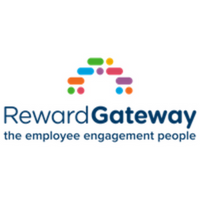How to make £28 billion disappear - 3 reasons recognition spend is vanishing

Let’s start out with a figure, say £35 billion ($46 billion), which is the amount of money Deloitte’s Bersin report says that companies in the United States spend on employee recognition programmes. It’s 1 to 2% of total payroll, so a pretty hefty amount of money to be spending on recognising employees, and to begin my magic trick.
Next, let’s take the money, put it into my magic hat, and wave my magic wand. Count to three and...it disappears! Well not all of it, but £28 billion ($36 billion) disappear. Why? Well this same report says that 78% of employees don’t feel recognised, which means that although companies are spending a lot of money on recognition it isn’t working, which means...company’s recognition money is disappearing!
Am I surprised? Not really. Why is that? Well if you read more of the report you’ll see that 87% of recognition money is being spent on long service awards. So the majority of this precious money is being spent to ‘recognise’ employees for staying with companies. No wonder employees don’t feel recognised and no wonder almost all the money disappeared!
Now as a magician I really shouldn’t tell you the secrets to my magic trick, but as we’re all HR professionals, let me tell you the three reasons why the money disappeared:
1) Long service awards don’t touch a large percentage of your population
If you want your employees to feel recognised, well quite frankly they need to be recognised. If you spend all your recognition money on long service awards you’re focusing your money on a small percentage of your total population, so not touching many of your employees.
To make it even worse, according to the Bureau of Labor Statistics, the average tenure is 4.6 years. So even if you round it to five years, when most long service awards begin, even fewer of your employees are going to stick around long enough to receive long services or... leave as soon as they get them. Ouch, more money disappearing.
2) Long service awards don’t provide continuous recognition
According to my company’s recent recognition study, 80% of employees want to be recognised on a continuous basis. If that’s the case, recognising them every five or ten years through a long service programme does little to tick this box. No wonder employees don’t feel recognised, for as nice as it is to get an award for long service, having to wait five plus years, it’s short lived as they know they won’t be recognised again for another five years. Think of it this way, would you stick around in a relationship when your partner recognised you (said they loved you) every five years… I don’t think so!
3) Long service awards don’t ‘recognise’
The definition of recognition has changed over the years. It’s moved on from acknowledging employees, to showing them you value them for their contributions, both in their actions and their behaviors. For this reason value-based recognition programmes have been found to be more effective, with a SHRM study showing that value-based programmes are two times more likely to have a return on investment and two times more likely retain their employees. How’s that for keeping your money in the magic hat and not disappearing?
Let me end by saying that I don’t have it out for long service awards. In fact, I’m all for celebrating and acknowledging employees for their tenure with a company. What I am saying is that if you want to make sure your recognition money doesn’t disappear then you need to do it the right way. So, wave your magic wand and make your recognition money work for your company and your employees!
Debra Corey is group reward director at Reward Gateway.
This article was provided by Reward Gateway.
Supplied by REBA Associate Member, Reward Gateway
We help the world's leading companies with an employee engagement platform.







